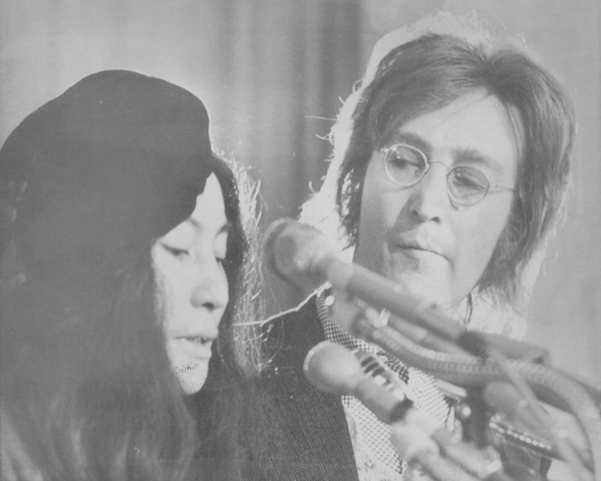April events in Club history

Dip down anywhere in the National Press Club’s 117-year history and we find remarkable stories about Club events that contributed to American, world and social history. The Club’s History and Heritage team is highlighting just a few each month so our members can appreciate the role the Club has played for well over a century as the place where news happens. Here’s some from April.
April 3, 1915 – In one of the first transcontinental phone calls, Secretary of State William Jennings Bryan called the San Francisco Press Club from the Club’s lounge to mark its opening.
April 28, 1923 – Hard to believe, but on this date one of the first demonstrations of experimental television happened at the Club. C. Francis Jenkins, a scientist working on sending photographs over the air, had sent a photograph of President Harding from the Naval Air Station, then in Anacostia, to the Philadelphia Bulletin. Journalists at the Press Club were skeptical, and they invited Jenkins to do a demonstration. Jenkins proved his technology by transmitting a photo of Club President Carter Field.
While he opened the first subscriber-based TV station in D.C. in 1928, his technology was soon outmoded, and Philo Farnsworth is acknowledged as the inventor of television
April 14, 1924 – Some of the greatest composers in America converged on the Club the day before they testified before Congress that radio – then a technology only four years old – was a menace to entertainment because composers were not compensated when their music was played over the air. Composer Victor Herbert complained that a song he composed was “played eight or 10 times a day … No one will buy a copy of that song now that it has been jammed down their ears ad nauseam.”
April 8, 1926 – President Calvin Coolidge laid the cornerstone for the National Press Building. Calling a free press a cornerstone of liberty, Coolidge said it wouldn’t last an hour if the First Amendment was struck down. “Rank partisanship quickly falls into a distortion of a complete misstatement of facts, accompanied by arguments, which lead to illogical and unsound conclusions … It is very difficult to reconcile a narrow and bitter partisanship with real patriotism.” The Club used Coolidge’s endorsement to raise money to complete construction.
April 22, 1933 – The first National Press Club luncheon was held on this date with British Prime Minister Ramsay MacDonald. Thousands of luncheons have followed it, becoming the Club’s signature event.
April 20, 1959 – Cuban revolutionary leader Fidel Castro spoke at the Club less than four months after seizing power. He insisted he was “against all kinds of dictators. We do not wish communism.” He said he had no offer from the Soviet Union. Everything he said turned out to be untrue. He was the last high-level Cuban official to speak at the Club until 1994.
April 28, 1972 – John Lennon and Yoko Ono held a press conference at the Club. They had become high-profile Vietnam War protestors, and U.S. Immigration and Naturalization Service wanted to deport Lennon on the grounds that he had been convicted in England on a 1968 drug charge. Lennon summed it up: “The only thing I would like to say today is, ‘Give peace a chance.’”
April 17, 2014 – Supreme Court Justices Ruth Bader Ginsburg and Antonin Scalia were guests on The Kalb Report, hosted by Marvin Kalb. The topic was “45 Words: The First Amendment to the Constitution.” They were ideological opposites on most legal issues. They disagreed on the 1964 New York Times v. Sullivan decision that shielded the news media from libel when reporting on public figures. But they talked about their personal friendship, including attending the opera together, saying ideological disagreement does not mean animosity.
